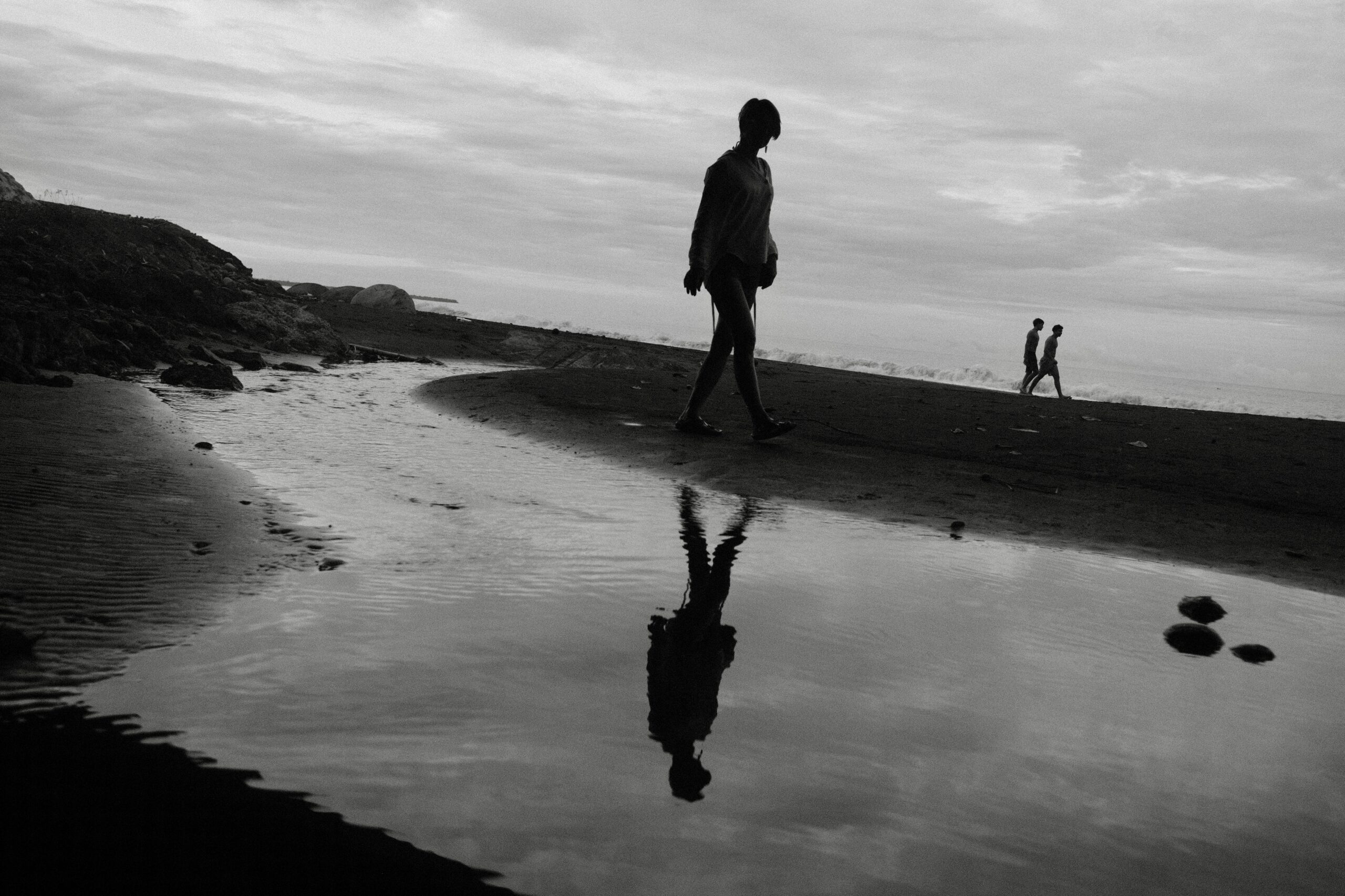After a walk along the beach, we went back to the hotel. Our feet were covered by a thin dark layer, black as engine grease. We took off our flip-flops; we opened the tap to the maximum and rubbed with our hands: nothing. The stain persisted, especially between the toes. In the room, with a dry towel, we tried again without success. In the end, there was nothing left but to resort to soap and patience.
That stain came from the sand of Playa Negra, which is next to Puerto Viejo, in the South Caribbean, in Costa Rica. We had arrived early, after a twenty-four-hour downpour, and the beach shone like a starry sky. We walked among those flashes, hypnotized, with timid waves that hardly dared to break.
Two streams flow into the beach. They come from a wetland that is on the other side of the street, behind buildings that should not be there. The beds of the streams share the same dark hue of the sand on the beach, suggesting that the sand comes from inland.
A pair of herons took flight from the wetland. One after the other. They brushed the waves and followed wherever seabirds fly to. We tend to imagine beautiful beaches as places of white sand. But there is something unexpected in the dark: a way of being that shows off other brightness.
The experiment
The sand was soft, compact, almost like velvet. Perfect for playing and tracing with the big toe that zigzagging groove that one leaves when walking. At first, the game entertains; then annoys. Could it be that the toes get tired or that it irritates us to see how the line is twisted? A little mystery that may be solved during another walk or conversation with friends.
After drawing pictures in the sand, the serious moment arrived: the experiment. We looked for a very dry beach area and took out the “Costa Rica Pura Vida” magnet that we bought in Puerto Viejo. We brought it close to the sand, and it was immediately covered in tiny black particles—grains that rose like metal hairs. Magnetic sand. It was the only thing that moved quickly on that relaxed Caribbean beach.
The magnetism of these sands comes from their metal content. Magnetite, rich in iron, responds to the Earth’s magnetic field and to modest magnets like the one in our souvenir. This mineral is formed inside the earth’s crust, in hot and iron-rich environments.
It is likely that these particles come from intrusive rocks of the Talamanca mountain range, formed between five and twenty million years ago, from magma that cooled underground. Thus, the gradual cooling and patience of the Earth give us the crystals that we find on the beach.
The black line of the sea
Why is there so much dark sand in Playa Negra? Why more than on other beaches? First, the rain hits volcanic rocks inland, washes fragments into rivers, and hopefully some make it into the sea. The wind, waves and sea currents then distribute this material.
In this part of the Costa Rican Caribbean, the tides barely exceed half a meter in width, so their influence on the shape of the beach is less. The currents, which flow from northwest to southeast, carry sediment along the coastline, driven by the trade winds and reinforced by the deep waves of the North Atlantic.
In this dynamic, a magnetite placer is formed: a thin layer of black, shiny, heavy grains that accumulates in the zone between tides. Denser than other minerals, magnetite settles when wave energy decreases, while lighter sediments are washed offshore or along the coast.
A magnetic rice and beans
That night we had rice and beans for dinner with chicken and Panamanian chili, and we still had black sand between our toes. It didn’t bother us. We had walked on minerals that, after forming millions of years ago, decided to stick to us as if we were great magnets.
We are attracted by the white beaches: they promise rest and perfection. But, if we let the Earth direct our steps as a guide to the minerals, we would walk more frequently on that dense, ancient and bright sand of Playa Negra. The true magnet of the South Caribbean.
One does not say goodbye to Playa Negra easily. Something sticks. Sometimes it’s just a stain between your toes. Other times, an idea that is slowly placed in the memory, like a grain of magnetite. Like a star.

